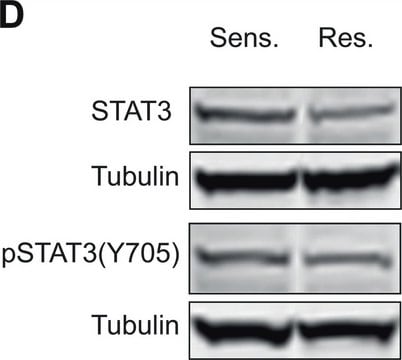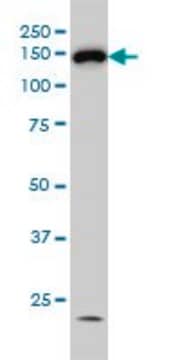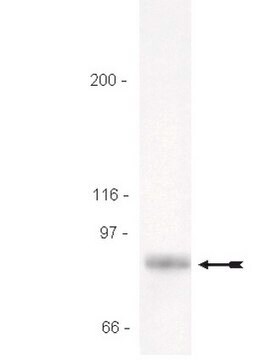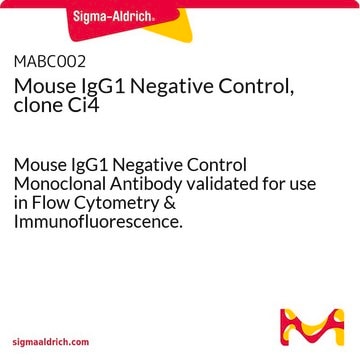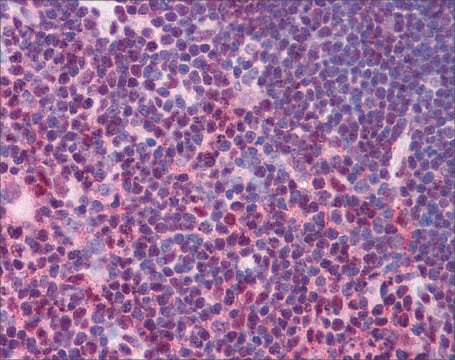05-485
Anti-phospho-STAT3 (Tyr705) Antibody, clone 9E12
clone 9E12, Upstate®, from mouse
Synonyme(s) :
Acute-phase response factor, DNA-binding protein APRF, signal transducer and activator of transcription 3, signal transducer and activator of transcription 3 (acute-phase response factor)
About This Item
Produits recommandés
Source biologique
mouse
Niveau de qualité
Forme d'anticorps
purified immunoglobulin
Type de produit anticorps
primary antibodies
Clone
9E12, monoclonal
Espèces réactives
canine, human, mouse
Fabricant/nom de marque
Upstate®
Technique(s)
ELISA: suitable
immunoprecipitation (IP): suitable
western blot: suitable
Isotype
IgG1κ
Numéro d'accès NCBI
Numéro d'accès UniProt
Conditions d'expédition
dry ice
Modification post-traductionnelle de la cible
phosphorylation (pTyr705)
Informations sur le gène
human ... STAT3(6774)
Description générale
Spécificité
Immunogène
Application
Épigénétique et fonction nucléaire
µ Test was conducted on a previous lot.
Facteurs de transcription
Qualité
µ
Description de la cible
Liaison
Forme physique
Stockage et stabilité
Recommandations relatives à la manipulation du produit :
dès réception, et avant retrait du bouchon, centrifuger le flacon et mélanger délicatement la solution. Répartir en aliquotes dans des microtubes à centrifuger et conserver ces derniers à -20 °C. Éviter les congélations/décongélations répétées, qui peuvent détériorer les IgG et nuire aux performances du produit. Remarque : Les variations de température à l'intérieur des congélateurs en-dessous de -20 °C peuvent provoquer la congélation des solutions à base de glycérol durant le stockage.
Remarque sur l'analyse
Autres remarques
Informations légales
Clause de non-responsabilité
Not finding the right product?
Try our Outil de sélection de produits.
En option
Mention d'avertissement
Danger
Mentions de danger
Conseils de prudence
Classification des risques
Acute Tox. 3 Dermal - Acute Tox. 4 Inhalation - Acute Tox. 4 Oral - Aquatic Chronic 3
Code de la classe de stockage
6.1C - Combustible acute toxic Cat.3 / toxic compounds or compounds which causing chronic effects
Classe de danger pour l'eau (WGK)
WGK 1
Certificats d'analyse (COA)
Recherchez un Certificats d'analyse (COA) en saisissant le numéro de lot du produit. Les numéros de lot figurent sur l'étiquette du produit après les mots "Lot" ou "Batch".
Déjà en possession de ce produit ?
Retrouvez la documentation relative aux produits que vous avez récemment achetés dans la Bibliothèque de documents.
Notre équipe de scientifiques dispose d'une expérience dans tous les secteurs de la recherche, notamment en sciences de la vie, science des matériaux, synthèse chimique, chromatographie, analyse et dans de nombreux autres domaines..
Contacter notre Service technique


